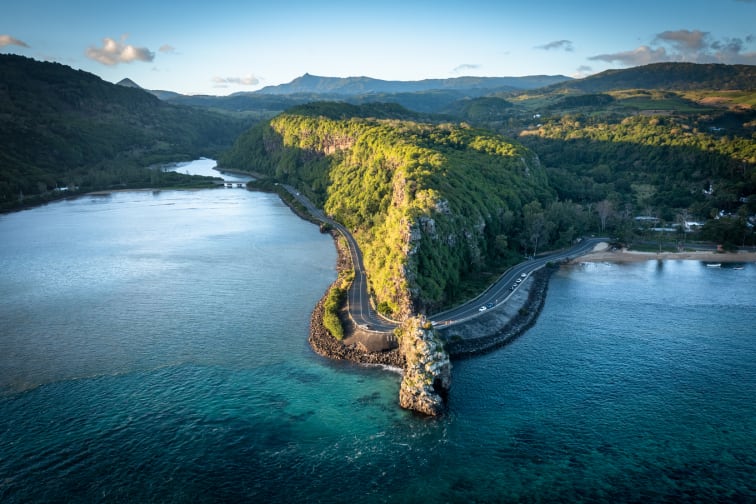Indian Ocean marine life: Discovering the 4 colours underwater
Beneath the surface of the Indian Ocean lies a world of vibrant colours that serve purposes far beyond just a beautiful sight. These underwater hues tell stories of adaptation, communication, and the delicate balance of oceanic life. Dr. Lekraj Etwarysing, Marine Biologist at Anantara Iko Mauritius Resort & Villas, offers fascinating insights into the significance of these colours in marine ecosystems.
Understanding the role of colour underwater

'Colour plays a significant role in marine ecosystems', explains Dr. Etwarysing. Many marine animals use colour to blend in with their surroundings to avoid predators or to sneak up on prey. Beyond camouflage, colour serves as a communication tool, especially in species like fish and cephalopods.
According to Dr. Etwarysing, 'Bright or vivid colours can signal aggression, attract mates, or indicate social status'. Some marine animals use bright, contrasting colours as warning signals to potential predators, while others display vibrant hues during mating season to attract partners and signal health and genetic fitness.
Blue: The signature colour of the ocean

The Blue Tang (Paracanthurus hepatus) epitomises the striking blues found throughout the Indian Ocean. Dr. Etwarysing notes that this species 'has a striking blue body and yellow tail' that 'uses its colouration for communication and possibly to ward off predators'.
The Indian Ocean itself showcases a mesmerising spectrum of blues. As Dr. Etwarysing describes the colour palette of the region, he highlights 'vivid blues, ranging from light turquoise to deep navy' as one of its most striking features.
Red-orange: The fiery hunters

The Coral Grouper (Cephalopholis miniata) represents the vibrant red-orange spectrum in the Indian Ocean. Dr. Etwarysing describes this species as having 'a vibrant red-orange body covered in blue spots'. He explains that 'its colouration helps with camouflage in coral reefs, allowing it to ambush prey, and also plays a role in communication'.
These warm hues form a crucial part of what Dr. Etwarysing identifies as 'sunset reds, oranges, and pinks from the coral reefs and marine life' that contribute to the distinctive palette of the Indian Ocean.
Yellow-gold: The social signalers

The Indian Ocean Oriental Sweetlips (Plectorhinchus vittatus) showcases the yellow spectrum with what Dr. Etwarysing describes as 'a yellow body with black-and-white horizontal stripes and spotted fins'. He notes that 'its colouration helps with camouflage, predator avoidance and social signalling'.
These golden tones are part of what Dr. Etwarysing identifies as 'golden yellows from sands and corals' that contribute to the vibrant underwater landscape of the Indian Ocean.
Green: The ancient mariners

The Green Sea Turtle (Chelonia mydas) represents one of the most distinctive green-hued creatures in these waters. Dr. Etwarysing describes it as 'one of the most iconic sea turtle species' with 'a distinctive greenish hue to its body, which comes from the algae in its digestive tract'.
These green tones form part of what Dr. Etwarysing calls 'emerald greens from seagrass meadows and tropical fish' that enhance the diverse colour palette of the Indian Ocean ecosystem.
Environmental influences on marine colours

The vibrant palette of the Indian Ocean isn't static—it shifts with environmental conditions. Dr. Etwarysing confirms that 'seasonal and environmental changes do significantly affect the colour diversity of marine life in the Indian Ocean'. He explains that these changes influence 'not only the appearance of marine species but also their behaviour, camouflage patterns, and even reproductive strategies'.
Climate change poses significant threats to this colourful diversity. As Dr. Etwarysing notes, 'Stresses such as climate change, coral bleaching, and pollution can reduce colour vibrancy and alter marine ecosystems, which can lead to long-term shifts in the region's colour palette'.
Conservation efforts in the Indian Ocean

Understanding the importance of protecting the Indian Ocean's colourful marine ecosystems, Anantara has established dedicated conservation initiatives across its properties. At Anantara Iko Mauritius Resort & Villas, Dr. Etwarysing manages a coral nursery focused on reef conservation while engaging local communities and hotel guests to raise awareness about these vital ecosystems.
Complementing these efforts, Anantara Maia Seychelles Villa has partnered with marine education specialists WiseOceans to offer guests immersive experiences including guided snorkelling sessions and interactive workshops led by Caitlin Rentell, onsite Marine Biologist and Educator from WiseOceans. Together, these projects aim to preserve the remarkable biodiversity and vibrant underwater landscapes that make the Indian Ocean such a unique marine environment, blending luxury hospitality with meaningful conservation impact.
Curated For You
You Might Also Like

ANANTARA IKO MAURITIUS RESORT & VILLAS
Retreat to a luxury coastal sanctuary on the undiscovered southeast shores of Mauritius. Laze on golden beaches or at the resort’s infinity pool. Taste exotic Creole flavours. Salute the sun with yoga, meditation and Tai Chi. Explore local culture and uncover natural wonders. Rejuvenate with hammam spa rituals or snorkel in Blue Bay Marine Park, a trove of marine biodiversity.




